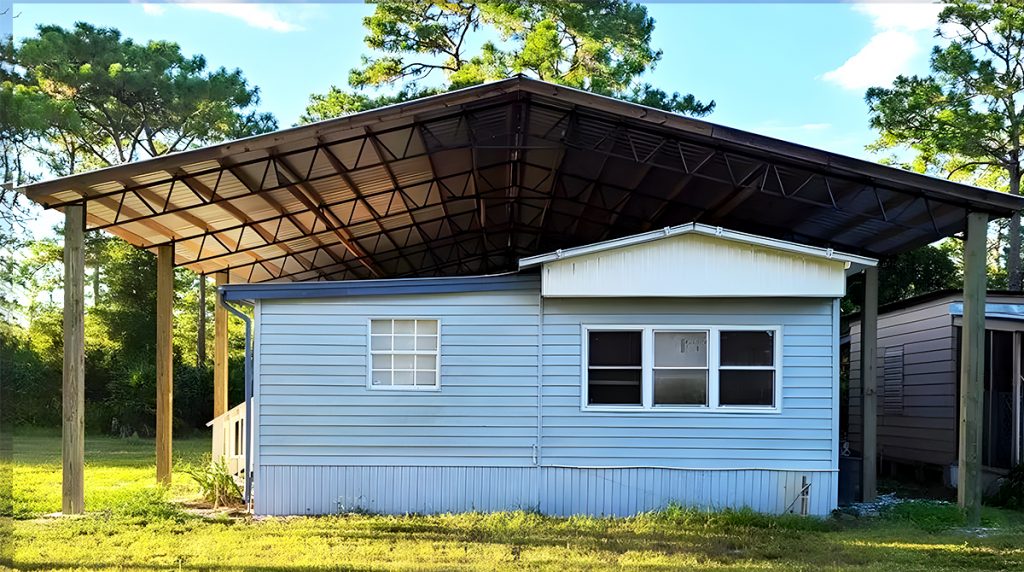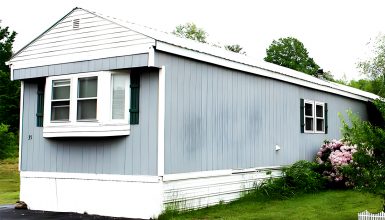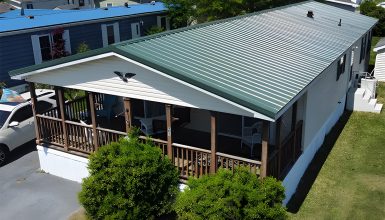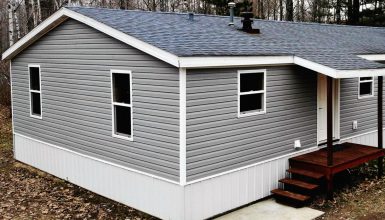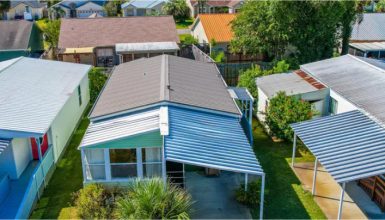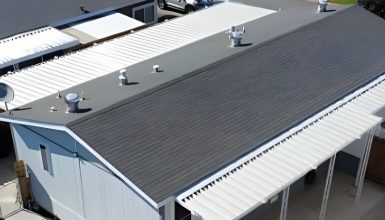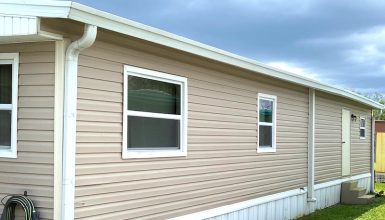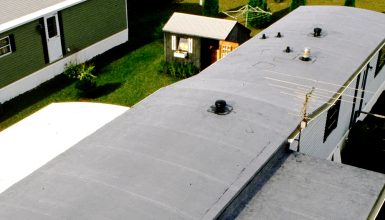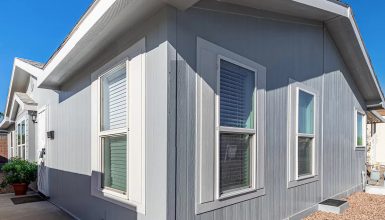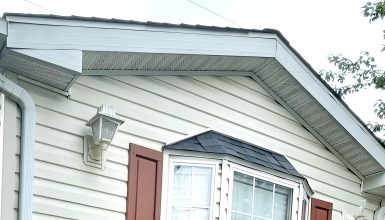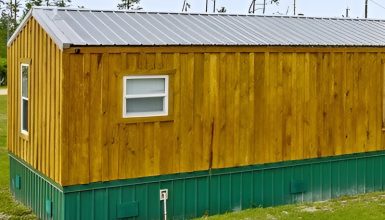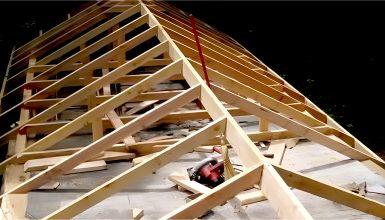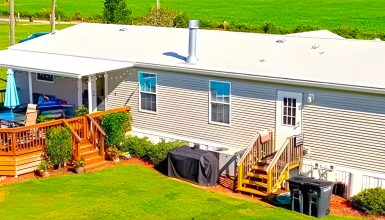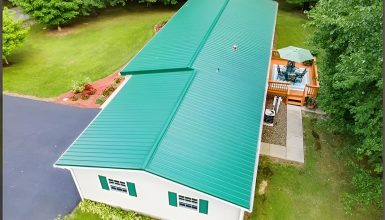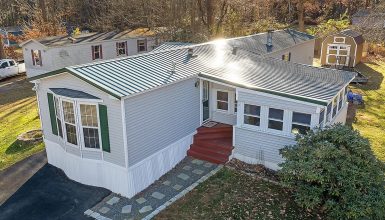A roof over your head—doesn’t it have a lovely ring to it? However, it takes on an even more literal meaning regarding mobile homes. As we all know, the roof of your mobile home does a lot more than just keep you dry. It’s your home’s first line of defense against the elements. And it’s key to your home’s energy efficiency. But here’s something you may not have considered: a pole barn roof. This practical, durable addition could be just the upgrade your mobile home needs!
Pole barn roofs have gained popularity for their simplicity in design and versatility. Think of them as the sturdy, unassuming hero in the world of mobile home improvement, blending practicality and style in a way that’s hard to resist. Plus, they’re an excellent way to increase the lifespan and value of your mobile home. So, are you ready to roll up your sleeves and get a bit of that can-do spirit going? In this guide, we’ll walk you through building a pole barn roof over your mobile home—one step at a time. It’s time to get excited about your next home improvement project!
Choosing a Mobile Home Pole Barn Roof Design
Here comes the fun part—choosing the right type and size of your pole barn roof. It’s like shopping for a new outfit for your mobile home. You want to find something that fits just right, looks good, and can handle whatever the weather throws.
- Size
First things first, let’s talk about size. Start by measuring the length and width of your mobile home. That’s your starting point. Then think about how much overhang you want on each side. It’s not just about aesthetics—although that’s important too—the overhang can also provide some extra shade and protection from the elements.
- Climate
The type of pole barn roof you choose can depend on a few things. For instance, how’s the weather in your neck of the woods? If you get a lot of snow, you might want a steeper roof to prevent snow buildup. Live somewhere windy? A lower-pitched roof can stand up better against strong winds.
- Style
And let’s not forget about style. Pole barn roofs come in all shapes and designs. Maybe you fancy a classic gable roof with its triangular shape, or perhaps a gambrel roof with its charming barn-like appearance tickles your fancy. Your choice should reflect your taste and the style of your mobile home.
Choosing the right type and size of pole barn roof is about finding that sweet spot between function and fashion. Remember, this roof isn’t just going to protect your mobile home—it will redefine it. So take your time, mull it over, and make a choice to make you smile every time you look at your mobile home. Your roof, your rules!
Building a Pole Barn Roof Over a Mobile Home
Alright, let’s get things started! Just like any worthwhile project, building a pole barn roof over your mobile home begins with thorough preparations. Think of it as laying the foundation for a smooth, successful transformation. So, what’s on the agenda? Let’s dive in!
Tools:
- Hammer
- Level
- Lape measure
- Drill
Materials
Now, let’s talk about materials. The show’s stars are the posts, trusses, roof purlins, and your chosen roofing material. The posts and trusses create the framework, the purlins give it stability, and the roofing material is the pretty face everyone will see.
Step-by-Step Installation
It’s time to roll up our sleeves and dive into the heart of the matter—the installation.
Step 1: Site preparation and measurements
First off, site preparation and measurements. Picture it like setting the stage for a big performance. You want to clear the area around your mobile home. Get rid of any obstacles that might be in the way. And then get those measurements right. Measure twice, cut once—that’s the golden rule.
Step 2: Installing the support posts
With that done, we’re ready to install the support posts. These posts are the legs of your roof—the solid and steady pillars that hold everything up. We will place them at just the right spots around your mobile home. Remember, we aim for a sturdy structure, so make sure those posts are firmly planted and level.
Step 3: Attaching the trusses
Next, we’re going to attach the trusses. Think of trusses as the skeleton of your roof. They give it its shape and strength. We’re going to secure them to the posts carefully. And don’t worry. We’re going to make sure they’re perfectly aligned. We’re all about precision here.
Step 4: Placing the roof purlins
Now, it is time to place the roof purlins. These horizontal beams connect the trusses together, providing that extra support layer. They’re like the ties that bind, making the structure cohesive.
Step 5: Installing the roofing material
And now, the moment you’ve been waiting for is installing the roofing material. It is where your mobile home gets its new hat. We will install it securely and evenly if you’ve chosen metal, shingles, or any other roofing material.
Step 6: Final touches and finishing
Finally, we reach the finishing touches. This is where we double-check everything, ensuring it’s secure and sturdy. And, of course, we’ll add any extras for aesthetics and additional protection. It is your roof, after all—it should look good while doing its job.
FAQs
There are several benefits to installing a pole barn roof over your mobile home. Firstly, it adds an extra layer of protection against the elements, increasing the lifespan of your mobile home. Secondly, it can improve your home’s energy efficiency by providing additional insulation. Lastly, a pole barn roof can enhance the aesthetic appeal of your home, potentially increasing its value.
Yes, in most cases, you will need a permit to build a pole barn roof over your mobile home. Construction permits are required for most major home improvement projects to ensure that the work is carried out safely and per local building codes.
Yes, you can! With the right tools, materials, and instructions, building a pole barn roof over your mobile home yourself is possible. However, if you’re uncomfortable with any part of the process, it’s always best to seek professional help. Safety first!
Ideally, you should inspect your roof at least twice a year—once in the spring and once in the fall. However, it’s also a good idea to check it after significant weather events to ensure no damage has occurred.
Yes, a properly constructed pole barn roof can handle heavy snowfall. However, the capacity to handle snow loads depends on the design and materials used in the roof construction. In areas with heavy snowfall, choosing a steep roof pitch is advisable to help the snow slide off easily.
The choice of material depends on several factors, including your budget, the climate in your area, and your personal preference. Metal is a popular choice for pole barn roofs due to its durability, low maintenance, and variety of color options. However, depending on your preference and needs, you can choose from materials like asphalt shingles or wood.
The cost to install a pole barn roof over your mobile home can vary widely based on factors like the size, the type, and the quality of materials you choose. And whether you do it yourself or hire a professional. On average, you might expect to pay between $3,000 and $10,000 for professional installation, depending on the project’s complexity.
Conclusion
Well, there you have it, folks! We’ve navigated the journey of building a pole barn roof over your mobile home together. From gathering the tools, choosing the right roof to lay the first post, and adding the final touches, we’ve walked through every process step.
But remember, this isn’t the end—it’s just the beginning. You’ve added a new feature to your mobile home that’s as functional as stylish. It’s more than just a roof—it’s a statement, a testament to your DIY skills and your care for your home.


